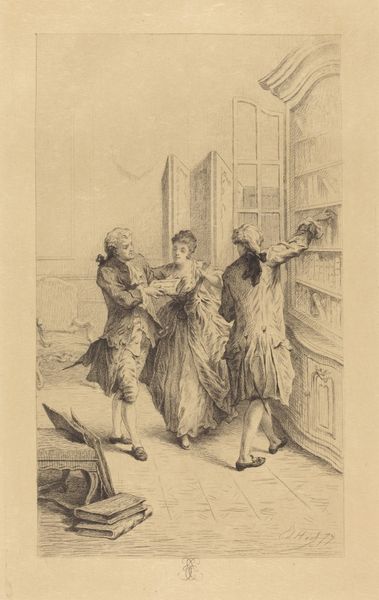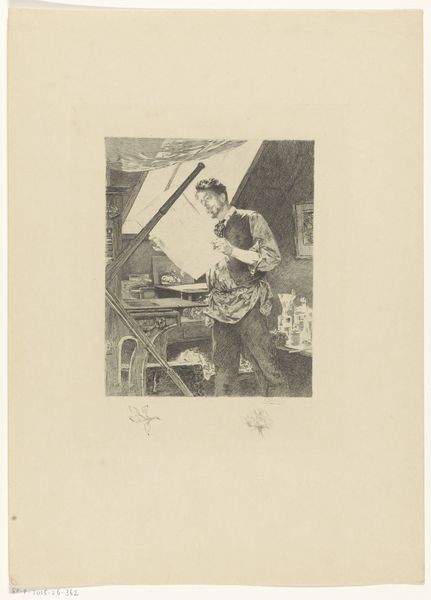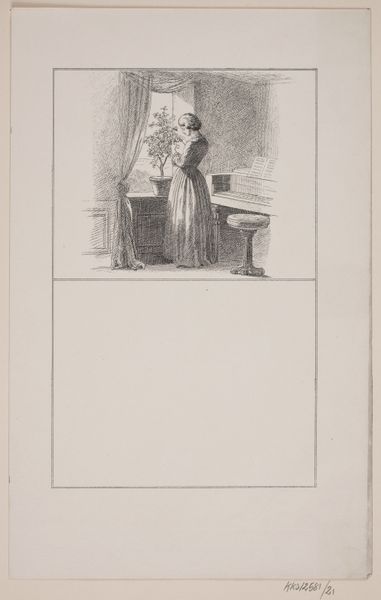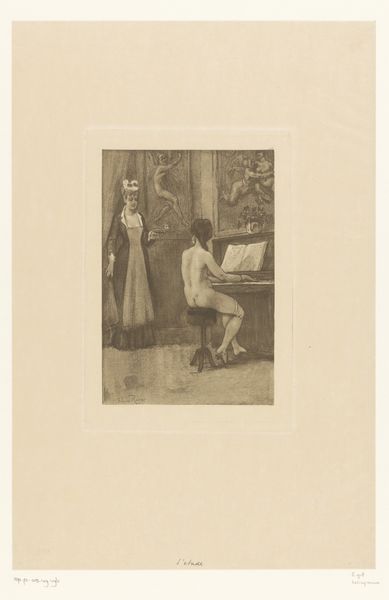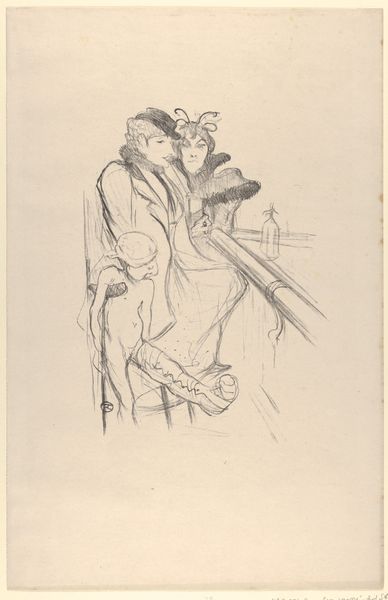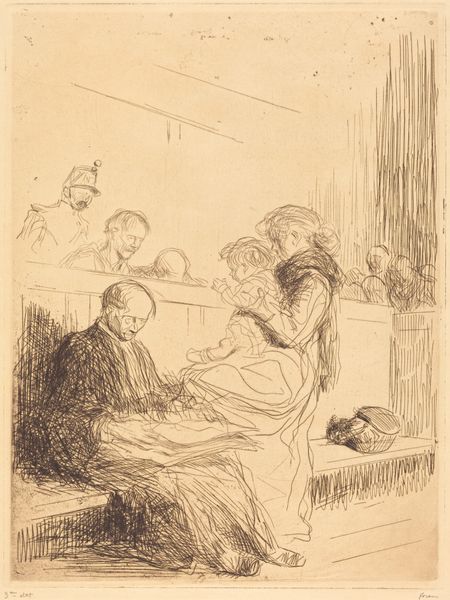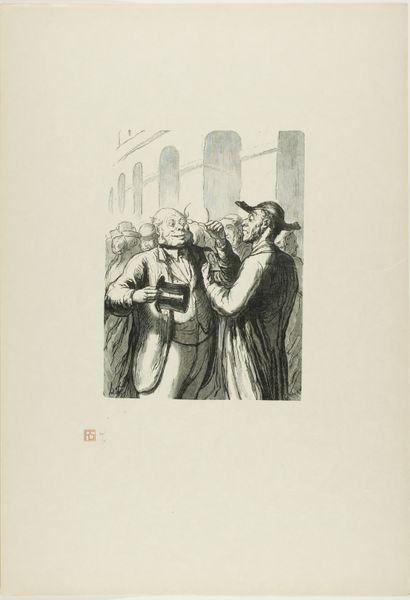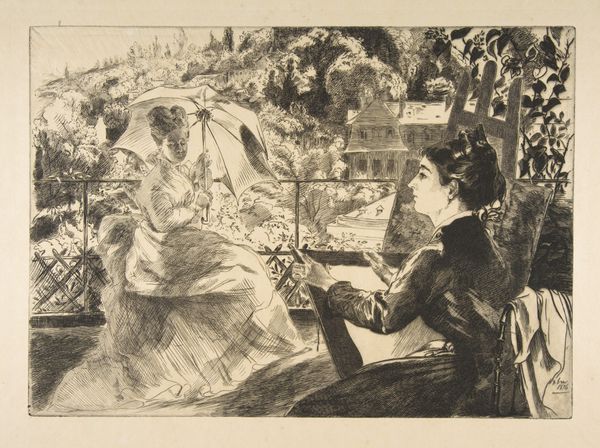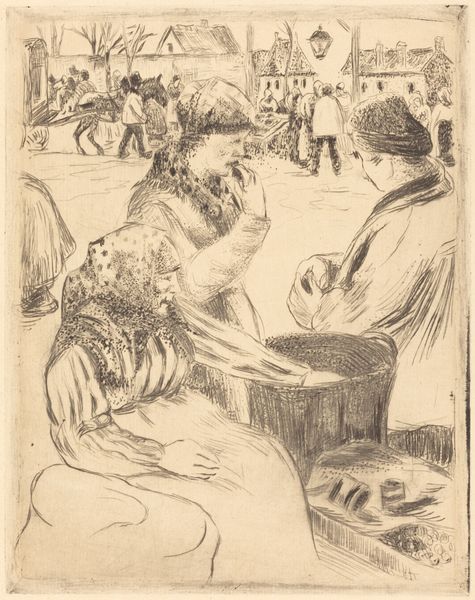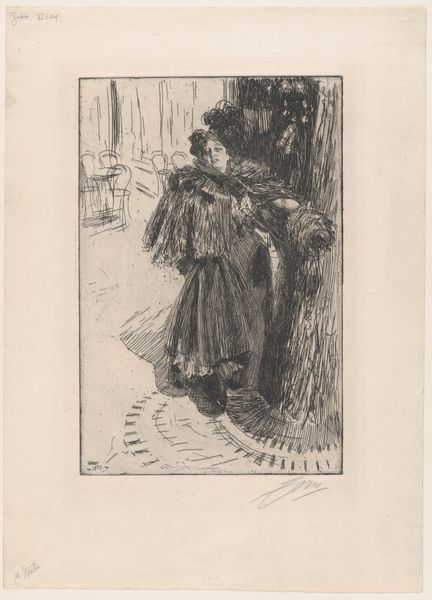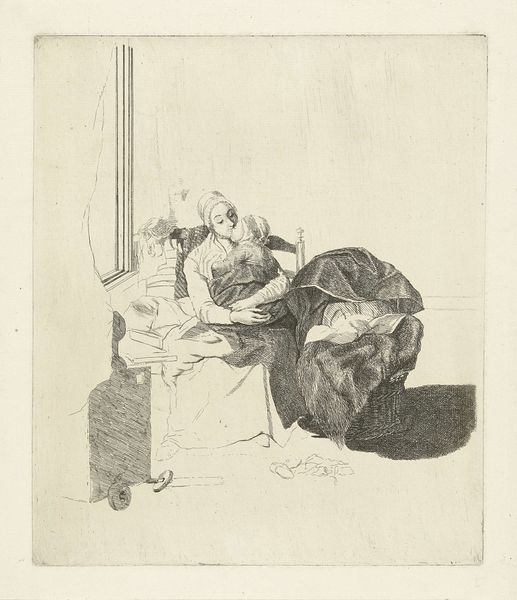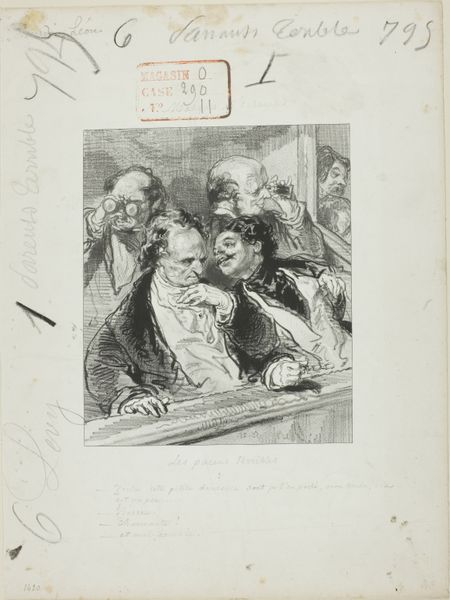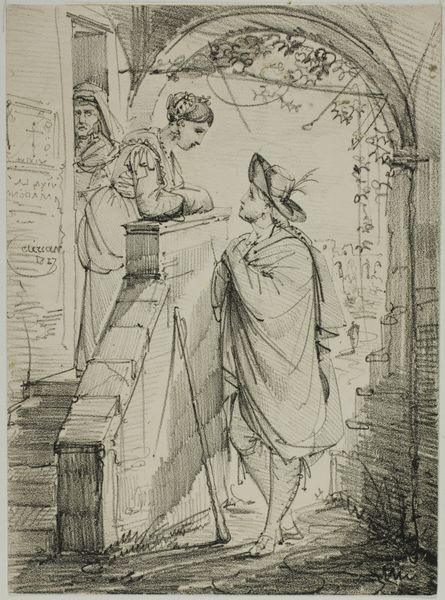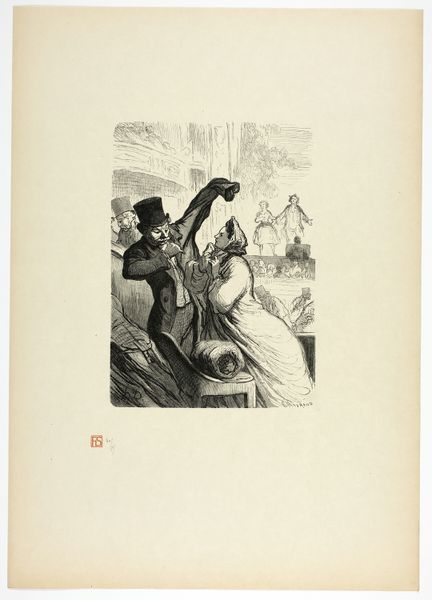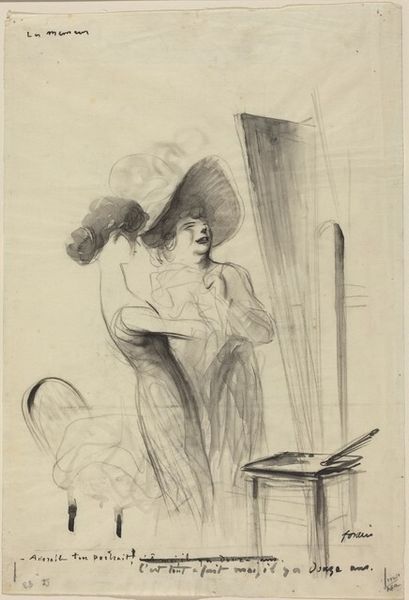
Dimensions: 329 × 235 mm (image); 420 × 309 mm (sheet)
Copyright: Public Domain
Curator: Welcome. We are standing before "The Little Model," an etching and crayon drawing on paper by Théophile Alexandre Steinlen, likely created between 1892 and 1900. It’s currently held here at The Art Institute of Chicago. Editor: My first thought is how peculiar the composition is. A partially nude model, a chaperone figure, an artist, all set against, or perhaps within, what seems to be a sheet of musical score? It feels… unbalanced. Curator: Exactly! And that perceived imbalance reveals a commentary on artistic production and the social context of the model’s labor. Notice the discarded tubes of paint on the floor, remnants of the means of production. The presence of both the chaperone and the musical score point to a culture industry shaping this young woman’s potential. Editor: But let's focus on the forms themselves. Look at the delicate hatching used to render the model's figure, juxtaposed with the coarser, almost caricatured lines of the artist and chaperone. The lines, the form—these create a sense of visual tension. There is a striking contrast between their states, the soft versus the severe. Curator: The contrast highlights, I believe, the material reality of the artist and his business of creativity versus the subject of their objectification. Note the redness that is cast on the cloak versus the pale tone of the women. She appears draped but exposed while the patron and older chaperone are enclosed and unseeing. It’s about power dynamics— the circulation of money, and influence within the artistic profession. Editor: I grant that, but I can't ignore how Steinlen's handling of line directs our gaze. It invites us to examine not just the subjects represented but the way representation itself constructs meaning. This also forces an intimacy or discomfort about the work on a whole. Curator: Yes, the medium becomes the message. The printmaking process is one of reproduction, mirroring the commodification of the female form. Editor: Steinlen has created something very complex; a scene, yet the setting is obscure with musical notation being its prominent feature and perhaps main objective. I’m leaving with an appreciation for how cleverly Steinlen wields formal elements to communicate his idea. Curator: Absolutely, examining the work from the lens of labor and social power gives new insight into the creation process. Hopefully the visitors of this gallery find the work as enticing and revealing.
Comments
No comments
Be the first to comment and join the conversation on the ultimate creative platform.
